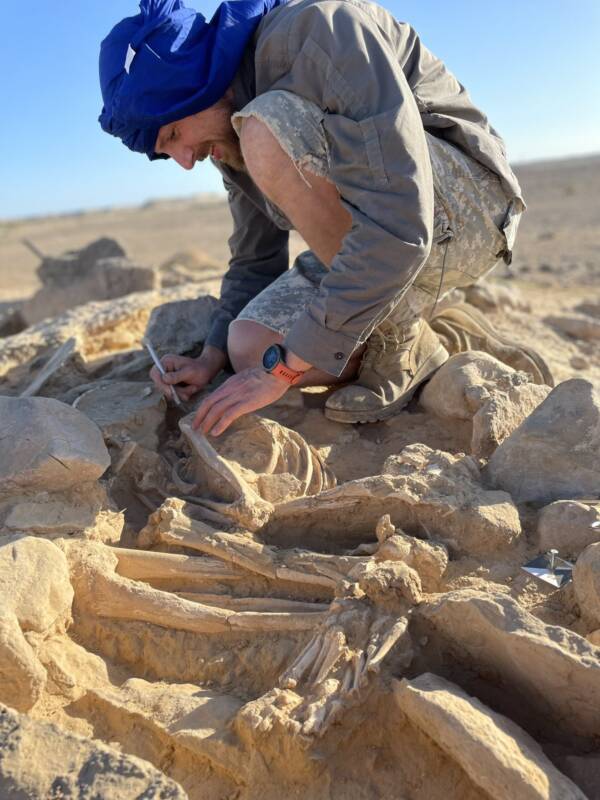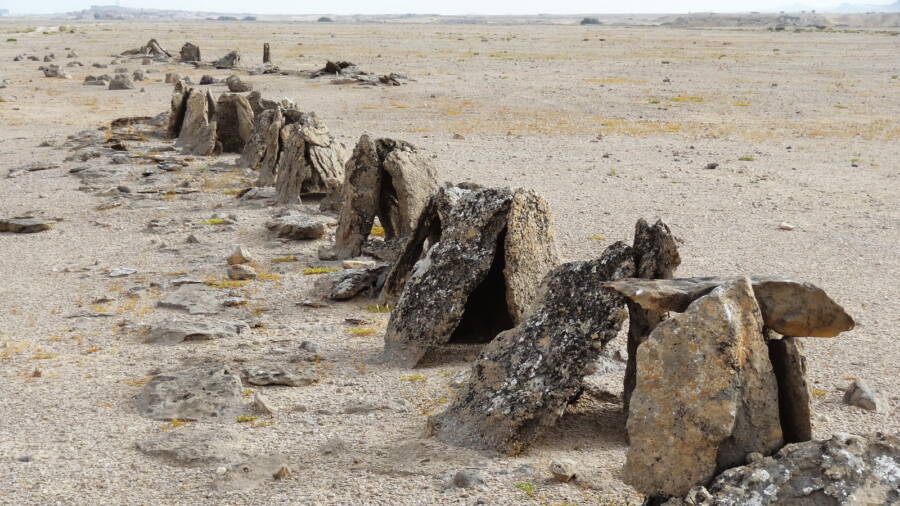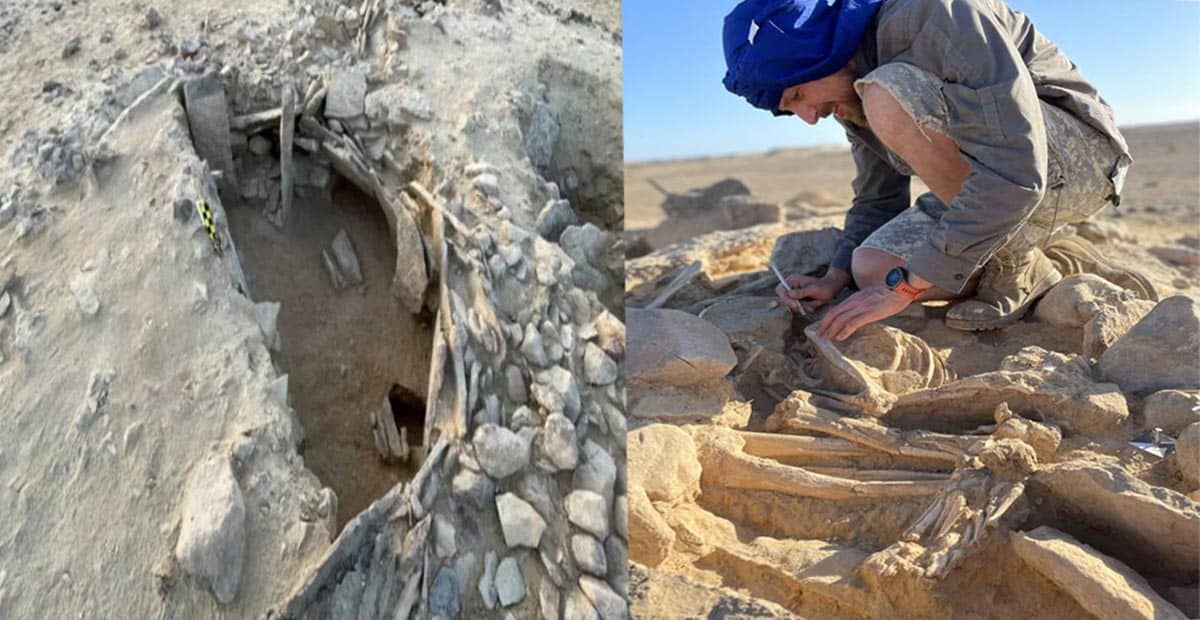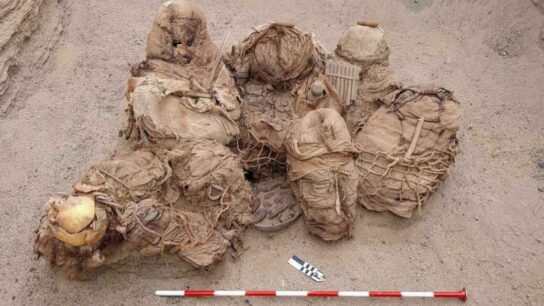Archaeologists In Oman Just Uncovered A ‘Completely Unique’ Mass Tomb From 7,000 Years Ago
Ten years ago, satellite photos picked up some curious images in the middle of the Omani desert. Now, a team of archaeologists from the Czech Republic’s Institute of Archaeology has investigated the site and uncovered — among other things — a Neolithic tomb from 7,000 years ago.
“What we find here is unique in the context of the whole of southern Arabia,” archaeologist Alžběta Danielisová explained in a statement from the Czech Republic’s Institute of Archaeology.
The tomb, located in Oman’s Al Wusta province, is among the oldest man-made structures ever found in the country. Danielisová told Live Science that “no Bronze Age or older graves are known in this region” making the discovery of the 7,000-year-old tomb “completely unique.”
According to the Institute of Archaeology, the tomb appears to date back to 5,000 – 4,600 B.C.E. It contains two circular burial chambers, as well as the skeletal remains of “at least several dozen individuals.”
Live Science additionally reports that the tomb’s walls were constructed with rows of stone slabs called ashlars. The tomb was also once covered with an ashlar roof, but it’s since partially collapsed, possibly because of the monsoon storms that strike the country every year.

The skeletons, who were positioned with their skulls near the outside wall, appear to have decomposed some before they were placed inside the tomb. Archaeologists also found a smaller tomb nearby, which may have been built slightly later. Danielisová told Live Science that the dead were likely buried at different times and not all at once.
Having discovered the tomb, the archaeologist’s next goal will be to learn more about the people buried inside.
“Isotopic analyses of bones, teeth, and shells will help us learn more about the diet, natural environment, and migrations of the buried population,” Danielisová explained in the Institute of Archaeology statement.
To better understand the lives and deaths of the people found in the 7,000-year-old tomb, archaeologists will also turn to other discoveries they made nearby. Not far from the burial site, they also found more than 500 rock engravings, which appear to depict animals like camels, horses, donkeys, and turtles. Enticingly, the engraving also depicts words in a South Arabic script that archaeologists haven’t yet interpreted.
That’s only part of what the archaeological team found during their survey of the area. As Live Science reports, they also uncovered a stone handaxe that may date to between 300,000 and 1.3 million years ago — coinciding with the first human migrations out of Africa — as well as a 2,000-year-old stone cluster known as “triliths.”
“Triliths are one of the great mysteries of Arab archaeology,” archaeologist Roman Garba of the Institute of Archaeology remarked to Artnet. “The most famous trilith or trilithon monument, as a category, is Stonehenge.”

Garba added: “Arabian triliths have probably similar functions linked with rituals, but are smaller, and were built in different times.”
Unlike the tomb, which stands as a rare find, triliths are frequently discovered across the Arabian peninsula. Artnet reports that hundreds, and perhaps thousands, of such stone clusters have been found before, often using satellite imagery. Their exact purpose eludes archaeologists, but radiocarbon dating might offer an idea of when they were first built.
Hopefully, this array of finds — from the 7,000-year-old tomb to the rock engravings to the triliths — can deepen our understanding of ancient people’s lives. Each offers a tantalizing peek into how Neolithic people lived, worshipped, died, and mourned their dead.




